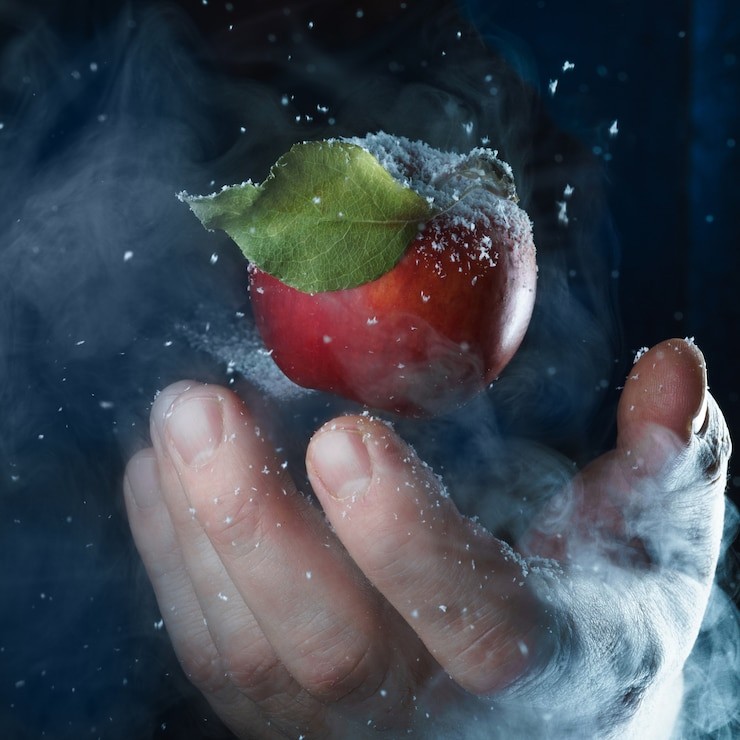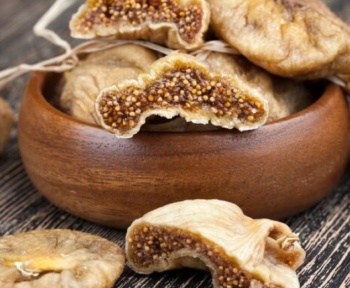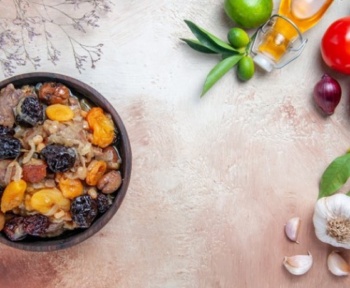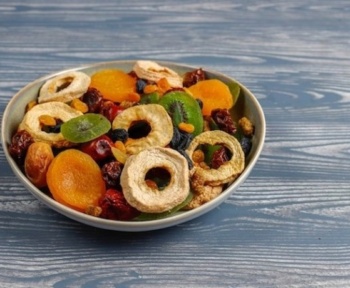Introduction:
If you’ve ever watched a sci-fi movie or visited a science lab, you’ve probably seen dry ice. It’s that super-cold, solid CO2 that’s famous for creating fog and all kinds of dramatic effects. But here’s something less well-known – dry ice can also carbonate fruit. You heard me right: your regular fruits can get a fizzy makeover. Imagine biting into a watermelon or a strawberry and having it bubble like your favorite soda. Sounds fun, right? In this blog, I’ll walk you through how lab-grade dry ice works to carbonate fruit and how you can try this fun experiment yourself. Let’s dive in!
What Is Lab Grade Dry Ice?
Dry Ice in a Nutshell
Let’s start with the basics. Dry ice is frozen carbon dioxide (CO2). Now, you know that regular ice melts into water, right? Dry ice is different – it goes straight from solid to gas in sublimation. It’s super cold (we’re talking -78°C!), so it’s great for freezing things quickly or creating that dramatic “smoke” effect at parties. But when it comes to food, you’ll want the best – which is why we’re talking about lab-grade dry ice. This type is pure and impurities-free, making it safe for food and drink prep.
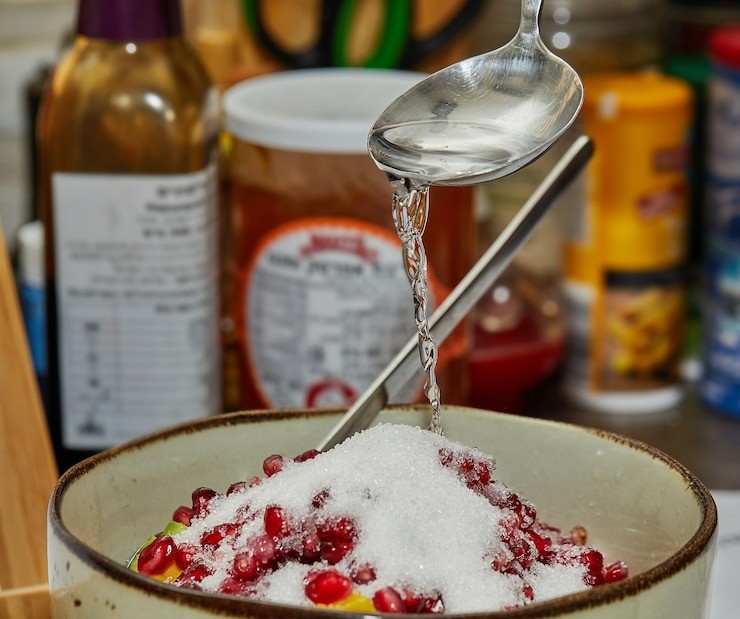
Why Lab-Grade?
Why should you care about lab-grade dry ice? Well, plain and simple, it’s clean. The “regular” dry ice you might find at a store isn’t always pure, and impurities can sometimes be a concern when working with food. Lab-grade dry ice? It’s the real deal. Safe, pure, and ideal for something like carbonating fruit.
How Does Dry Ice Work?
Dry ice works by sublimating, so it turns into a gas without melting. This releases carbon dioxide (CO2), which gives drinks their fizz. When you use dry ice to carbonate fruit, the CO2 gas is absorbed by the fruit, creating those fun bubbles we all love. It’s a simple process, but it requires patience – and a little dry ice magic!
Understanding Carbonation
Carbonation is basically what makes soda, sparkling water, and beers fizzy. It’s all about CO2 gas dissolving into liquids or solids. So, when we carbonate fruit, the CO2 gets absorbed into the fruit’s water content, creating those refreshing bubbles. It’s like turning your average apple or strawberry into a fizzy treat – without all the sugar and artificial flavors.
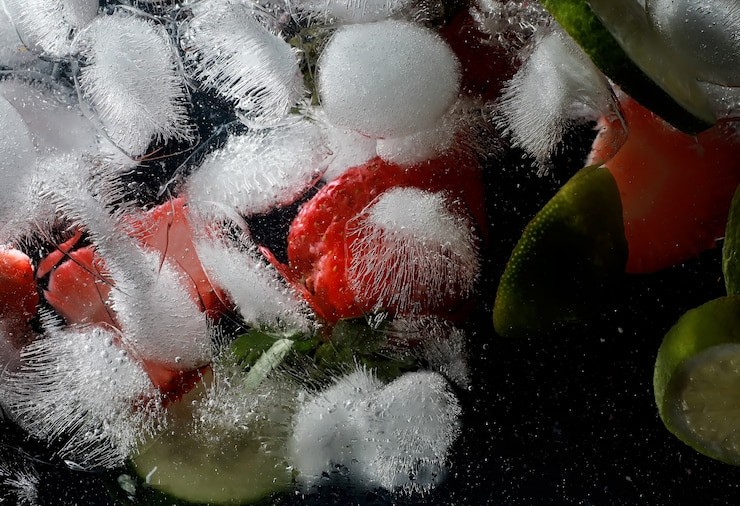
Can Lab-Grade Dry Ice Carbonate Fruit?
Yep! Lab-grade dry ice can carbonate fruit. The process is simple: the fruit absorbs the CO2 gas released from the dry ice. The result? A fizzy, bubbly fruit that tastes fresh and fun. But here’s the catch: it doesn’t happen immediately, so don’t expect instant bubbles. You’ll need to let the dry ice work its magic over time.
Which Fruits Are Best for Carbonating?
Some fruits soak up the carbonation better than others. You’ll want fruits with a nice, firm texture and high water content for the best results. Here are a few of the best options:

These fruits absorb the CO2 efficiently and have that perfect, fizzy texture.
How to Carbonate Fruit with Lab-Grade Dry Ice
Step-by-Step Guide
Let’s get down to the good stuff – how do you carbonate fruit at home with dry ice? It’s easier than you might think, and here’s how to do it:
- Pick Your Fruit: Go for firm fruits like apples, grapes, or strawberries. The firmer the fruit, the better it will absorb the CO2.
- Break the Dry Ice Into Pieces: Use gloves (seriously, don’t skip this part) or tongs to break the dry ice into small chunks. You don’t need much – just enough to release much CO2.
- Get Your Container Ready: Grab a container – something with a lid works best. It could be a glass jar, a plastic bowl, or even a plastic bottle. The key is that it should be big enough to fit your fruit and some dry ice, but not too big.
- Add the Dry Ice: Carefully place the dry ice pieces in the container with the fruit. Just a few pieces will do the trick.
- Seal the Container: Put the lid on, but don’t tighten it completely. You need to leave a little room for gas to escape – this prevents pressure from building up.
- Wait for It: Now, let the magic happen. Leave the container for about 10-30 minutes. The CO2 will slowly absorb into the fruit, giving it that fizzy texture. It’s like a fruit soda but way cooler (literally).
- Handle Dry Ice Safely: Remember, dry ice is super cold! Always use gloves or tongs when handling it, and keep it out of reach of kids or pets.
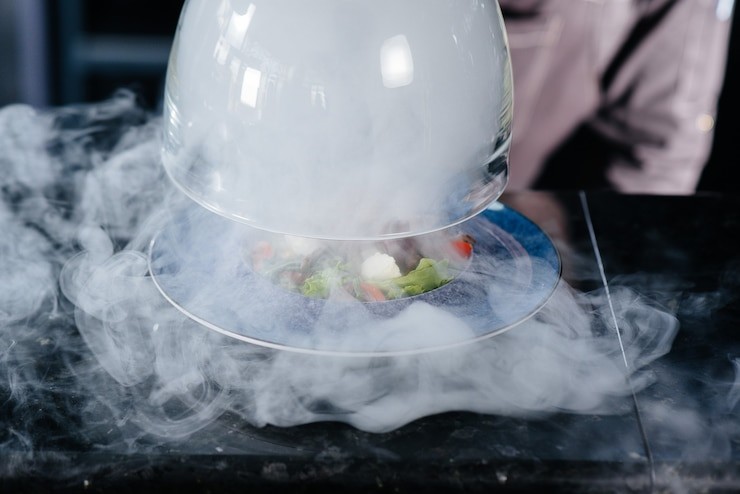
Interview with Chef Mark, Culinary Innovator
We caught up with Chef Mark, a culinary expert experimenting with dry ice in his kitchen. He shared his thoughts on carbonating fruit:
“Carbonating fruit is a fun way to bring a little excitement into your kitchen. I love how it enhances the texture and flavor. The bubbles really make the fruit pop, and the best part is that you don’t need to add any sugar or artificial ingredients. It’s a pure, natural fizz.”
Infographic: How to Carbonate Fruit with Dry Ice
Here’s a handy visual breakdown of the steps:

Why Carbonated Fruit Is So Fun
The Benefits of Carbonated Fruit
Carbonated fruit isn’t just a cool trick – it has a lot of benefits, too:
- Flavor Boost: The carbonation enhances the fruit’s natural flavor, making it taste fresher and more vibrant.
- Lasts Longer: The CO2 slows oxidation, meaning your fruit can stay fresh for a little longer.
- Visually Fun: There’s just something about fizzy fruit that grabs attention. It’s perfect for impressing friends or elevating a snack.
Carbonated Fruit in Fine Dining
Believe it or not, carbonated fruit is starting to show up in high-end restaurants. Chefs are using it to add texture and excitement to dishes. It’s not just a fun trick – it’s a way to give a fresh, modern twist to traditional ingredients. Whether as a garnish for cocktails, a unique addition to salads, or a stand-alone dessert, fizzy fruit is popping up on more fine dining menus.
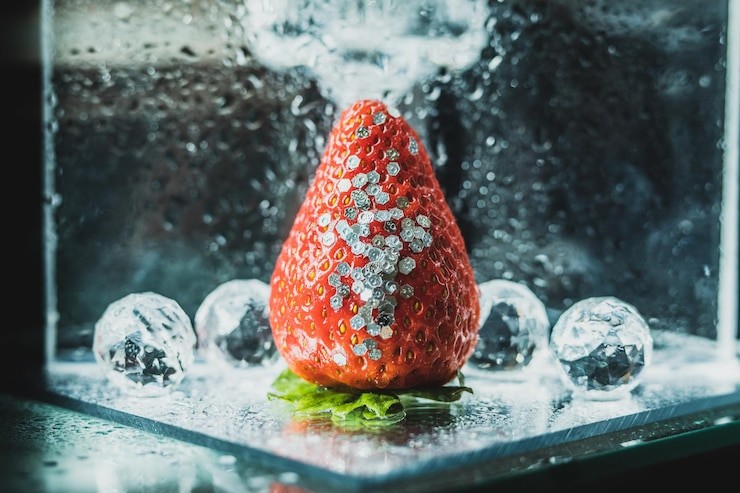
Dry Ice Safety
Safety Tips for Handling Dry Ice
While dry ice is fantastic, it does require some safety precautions. Here’s a quick checklist:

How to Serve Carbonated Fruit
So you’ve got your fizzy fruit – now what? Here are some fun ways to serve it:
- Fruit Salads: Toss carbonated fruit into a salad for a pop of fizz.
- Cocktail Garnish: Carbonated grapes or berries make for a great cocktail topper.
- On Their Own: Eat them as is – they’re a refreshing, fizzy treat!
Conclusion
So there you have it – carbonating fruit with lab-grade dry ice is as easy as it sounds, and it’s a great way to add a fizzy twist to your fruit game. It’s fun, safe (when handled correctly), and exciting for your food prep. Whether preparing fruit for a party or just experimenting at home, dry ice carbonation is a cool trick sure to impress. Give it a try – your taste buds will thank you!
FAQs
Yes, it is safe as long as you follow proper handling instructions. Dry ice can be dangerous if mishandled, so always use gloves and tongs when handling it. Keep dry ice in a well-ventilated area, and never store it in airtight containers to avoid pressure build-up.
Typically, it takes 10 to 30 minutes for the CO2 from the dry ice to absorb into the fruit, depending on the type of fruit and the amount of dry ice used. Be patient; you’ll start seeing some bubbles as the process happens!
Not all fruits are equally good at absorbing CO2, but fruits with high water content, like grapes, strawberries, and watermelon, work best. Firmer fruits like apples and oranges also take well to carbonation. Like pineapples, fruits with tough skin might not carbonate as effectively.
Once the fruit has been carbonated, it’s ready to eat! The carbonation gives the fruit a fun, fizzy texture, but it’s still fresh and tasty. Enjoy it immediately for the best effect, as the fizz will slowly fade.
Lab-grade dry ice can be purchased from suppliers that sell dry ice for food or scientific purposes. You can find it at specialty grocery stores or order it online. Be sure to buy from a reputable source to ensure the quality and safety of the dry ice.


